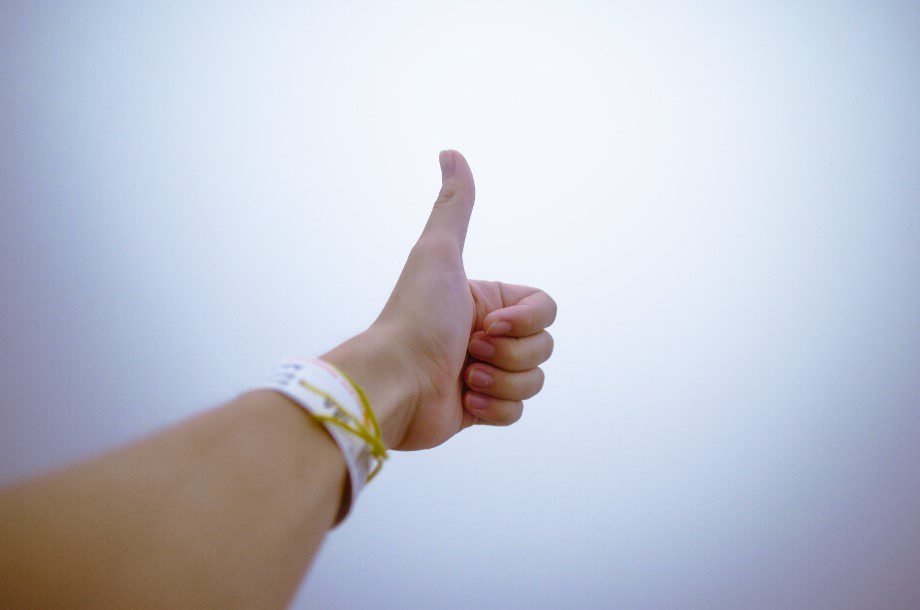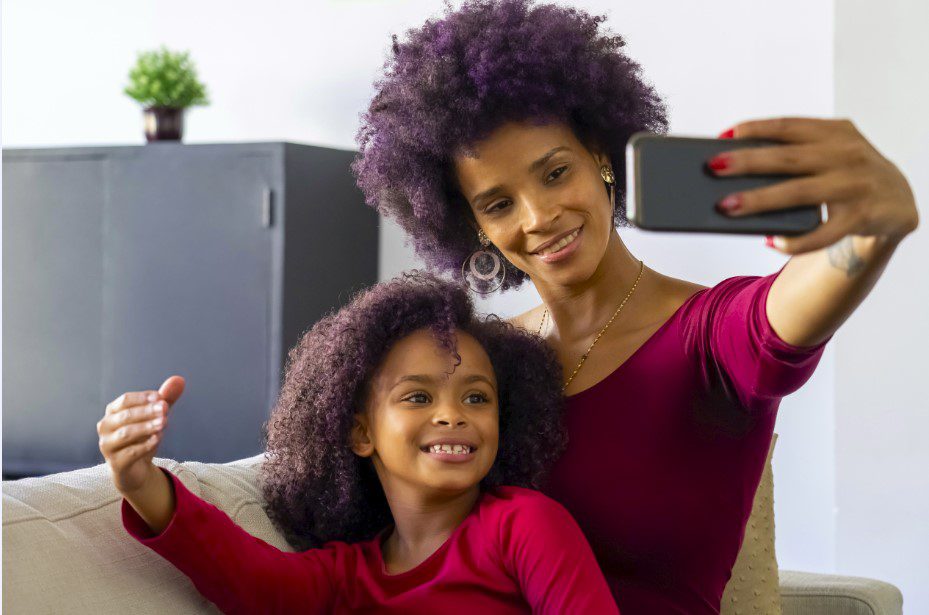In today’s image-driven society, where flawless appearance is vividly celebrated, the topic of body image continues to gain increasing prominence. Many individuals, children inclusive, face a barrage of unrealistic beauty standards and negative body image messages from media, social platforms, and peer interactions.
The perception of one’s body plays a pivotal role in shaping self-esteem, overall well-being, and even future physical and mental health outcomes.
As parents, it is our mission to take a proactive role in promoting a positive body image in our children. This will help them cultivate a healthy relationship with their bodies.
This article explores the factors influencing body image, the related consequences, and the importance of promoting a nurturing environment from an early age. We also suggest practical strategies to empower parents in supporting their children on this journey.
Exactly What is Body Image?

Body image refers to an individual’s perception, thoughts, and feelings about their own body. It is influenced by factors such as societal ideals of beauty, cultural norms, media representations, peer influences, family attitudes, personal experiences, and individual characteristics.
Body image encompasses attributes and aspects such as:
- Size and Shape: This refers to how individuals perceive and evaluate the overall size and shape of their body. It can involve judgments about being too thin, fat, tall, short, or having specific body proportions.
- Weight and Body Mass Index (BMI): Body image can be influenced by perceptions of weight and BMI. Individuals may then view themselves as underweight, of higher weight, or of a desired weight range.
- Physical Features: Body image includes perceptions and evaluations of specific physical features, such as facial features, body hair, skin complexion, body symmetry, muscle tone, and body proportions.
- Skin and Complexion: This aspect relates to how individuals perceive and feel about their skin color, and texture. It may also involve how they perceive imperfections such as acne, blemishes, scars, or birthmarks.
- Hair: Body image involves thoughts and feelings related to hair, such as hair type, color, thickness, and style. It may also include judgments about hair loss or unwanted hair growth.
- Body Parts: Individuals may have specific concerns or evaluations regarding certain body parts, such as the abdomen, thighs, buttocks, breasts, genitals, arms, or legs. Body image can involve perceptions of these body parts in terms of size, shape, firmness, or perceived attractiveness.
- Physical Fitness and Health: Body image can be influenced by perceptions of physical fitness, stamina, and overall health. Individuals may evaluate themselves based on their perceived level of fitness or compare themselves to societal standards of health and fitness.
- Clothing and Fashion: Body image can be affected by perceptions of how clothing fits, looks, and flatters the body. It includes thoughts and feelings about fashion trends, personal style, and the ability to express oneself through clothing choices.
… body image in relation to cognition and emotions:
The subject of body image is a multidimensional concept that involves both cognitive and emotional components.
Cognitive aspect: The cognitive aspect of body image involves the thoughts and beliefs a person holds about their body. This includes evaluations and judgments about their appearance, comparisons to societal standards or idealized images, and the importance placed on physical attributes.
Emotional aspect: The emotional aspect of body image refers to the feelings and emotions associated with one’s body. These can range from positive emotions such as pride, confidence, and satisfaction to negative emotions like shame, dissatisfaction, and insecurity.
… positive and negative body image:
A positive body image involves accepting and appreciating one’s body as it is, recognizing its strengths and uniqueness, and having a healthy relationship with one’s physical appearance. It involves feeling comfortable and confident in one’s own skin, irrespective of societal pressures or unrealistic beauty standards.
On the other hand, negative body image is characterized by dissatisfaction, self-criticism, and a distorted perception of one’s body. It often involves striving for an unattainable or idealized body shape, feeling inadequate or ashamed of one’s appearance, and experiencing significant distress or preoccupation with physical flaws.
What is the Global State of Body Image?

1. Prevalence:
Studies indicate that negative body image is becoming increasingly common among children. According to research conducted by the National Eating Disorders Association, around 40-60% of elementary school girls (ages 6-12) are concerned about their weight or body shape.
2. Media Influence:
Children are exposed to a barrage of media messages that promote unrealistic beauty standards. Advertisements, television shows, movies, and social media platforms often depict thinness, muscularity, or other idealized body types, leading to body dissatisfaction among children.
3. Early Onset:
Negative body image can develop at a young age, with research suggesting that children as young as 3 to 5 years old can exhibit body dissatisfaction. This emphasizes the need for early intervention and prevention strategies.
4. Gender Differences:
While all children are affected by negative body image, there are some gender differences. Boys are increasingly experiencing body image concerns related to muscularity and body shape, while girls commonly face pressures related to thinness.
5. Sociocultural Factors:
Societal influences, such as peer pressure and comparisons to unrealistic beauty ideals, contribute to negative body image in children. The desire to fit in and meet societal expectations can lead to dissatisfaction with one’s own body.
6. Parental Influence:
Parents and caregivers play a significant role in shaping children’s body image. Children who receive positive reinforcement, support, and acceptance from their parents are more likely to develop a healthy body image.
7. Peer Influence:
Peers also have a substantial impact on children’s body image perceptions. Negative comments, teasing, or bullying related to appearance can contribute to body dissatisfaction and a negative self-image.
8. Cultural Diversity:
Negative body image is not limited to a specific cultural or ethnic group. Children from various cultural backgrounds can experience body dissatisfaction due to the influence of global media and societal pressures.
The Consequences of Negative Body Image

Negative body image in children has been linked to a range of emotional, psychological, and physical challenges:
1. Lower self-esteem:
Children with negative body image often experience lower self-esteem and self-worth. They may feel dissatisfied with their appearance, compare themselves unfavorably to others, and perceive themselves as less valuable or attractive.
2. Psychological distress:
Negative body image can contribute to psychological distress, including symptoms of anxiety and depression. Children may experience heightened levels of stress, sadness, and negative emotions due to their dissatisfaction with their bodies.
3. Disordered eating behaviors:
Negative body image is a risk factor for the development of disordered eating behaviors in children. This can include restrictive eating, over eating, purging, or engaging in unhealthy weight control practices, which can have severe physical and psychological consequences.
4. Poor body functionality:
When children are negative about how they look, they may focus more on their appearance rather than their other capabilities. This can lead to a reduced emphasis on physical health and fitness. This potentially results in a lack of engagement in physical activities, and therefore, decreased overall body functionality.
5. Social withdrawal and isolation:
Children with negative body image may experience social withdrawal and isolation due to feelings of self-consciousness, shame, or fear of judgment. They may avoid participating in social activities, sports, or events where they feel their bodies will be scrutinized or compared to others.
6. Impact on academics:
Negative body image can also impact a child’s academic performance. When children are preoccupied with their appearance and body dissatisfaction, it can lead to decreased focus, concentration difficulties, and reduced motivation to excel in school.
7. Impact on relationships:
Negative body image can strain relationships with peers, friends, and family members. Children may struggle with interpersonal connections, feeling insecure or judged based on their appearance. This can lead to difficulties in forming and maintaining healthy relationships.
8. Long-term health effects:
Persistently negative body image in childhood can have long-term health consequences. It is associated with an increased risk of developing eating disorders, body dysmorphic disorder, and other mental health disorders.
Additionally, it may contribute to unhealthy lifestyle behaviors and an increased risk of obesity or weight-related health issues.
How Parents Can Fight Negative Body Image

Parents, caregivers, and educators play a pivotal role in shaping children’s perceptions and attitudes towards their bodies. By providing a supportive atmosphere, environment, and love, they foster an all round sense of emotional intelligence that children badly need today in the 21st century.
The following points explain how it can be done:
1. Lead by Example
Children often imitate their parents’ behaviors and attitudes. Therefore, it is essential for parents to demonstrate a positive body image themselves. Avoid negative self-talk, embrace your own body, and focus on the importance of self-acceptance and self-love. By being a positive role model, you can inspire your children to develop a healthy body image.
2. Create a Supportive Environment
Surround your children with positive influences and a supportive social circle. Encourage them to cultivate friendships with individuals who appreciate and value them for who they are, rather than focusing on appearance.
3. Encourage Self-Expression
Encourage your children to express themselves creatively and individually. Provide them with opportunities to engage in activities they enjoy, such as art, music, dance, or sports. Self-expression helps children develop a sense of self-worth beyond physical appearance.
4. Promote a Healthy Lifestyle
Instead of focusing solely on appearance, emphasize the importance of a healthy lifestyle. Teach your children about the benefits of nutritious food, regular exercise, and sufficient sleep. Encourage them to engage in physical activities they enjoy and make healthy choices that nourish their bodies.
5. Foster Media Literacy
Teach children to critically analyze media messages regarding beauty and body image. Discuss the unrealistic nature of heavily edited images and the influence of advertising on self-perception. Help them understand that media often promotes unattainable standards, and that true beauty comes in diverse shapes, sizes, and forms.
6. Teach Critical Thinking
Equip children with critical thinking skills to question societal beauty standards. Encourage them to challenge narrow definitions of beauty and promote inclusivity and acceptance. Teach them to appreciate individual differences and emphasize the importance of inner qualities over external appearance.
7. Address Bullying and Teasing
Bullying and teasing based on appearance can significantly impact a child’s body image. Create a safe space for your children to share their experiences and emotions. Teach them how to respond assertively to negative comments and seek support from trusted adults. By addressing offline and online bullying and teasing, you empower your children to maintain a positive body image despite external influences.
8. Focus on Inner Qualities
Shift the focus from physical appearance to inner qualities and strengths. Praise your children for their kindness, intelligence, creativity, and resilience. Emphasize that true beauty lies in their unique qualities and character.
9. Encourage Open Communication
Create an environment where open and honest communication is valued. Encourage your children to express their thoughts and feelings about their bodies without judgment. Listen actively and validate their emotions. By fostering open communication, you provide a safe space for them to discuss any body image concerns they may have.
10. Avoid Negative Self-Talk
Be mindful of your own language when talking about your body or engaging in self-criticism. Avoid negative self-talk or derogatory comments about your appearance. Instead, model self-acceptance and self-compassion. By refraining from negative self-talk, you create a healthier environment for your children to develop a positive body image.
11. Seek Professional Help
If you notice persistent signs of negative body image or if your child is struggling with self-esteem, consider seeking professional help. A qualified therapist or counselor can provide guidance and support tailored to your child’s specific needs. They can offer tools and strategies to promote a positive body image and address any underlying issues.
FAQs
How can I encourage my child to develop a positive body image?
Encourage self-expression, promote a healthy lifestyle, and teach critical thinking skills. Lead by example and foster open communication.
What if my child is being bullied or teased about their appearance?
Address the issue by creating a safe space for communication, teaching assertiveness, and seeking support from trusted adults.
Should I talk to my child about media influence on body image?
Yes, teach media literacy skills and help them critically analyze unrealistic beauty standards portrayed in the media.
What if my child is struggling with negative body image despite my efforts?
Consider seeking professional help from a therapist or counselor who specializes in body image and self-esteem issues.
How can I support my child in developing self-acceptance?
Focus on their inner qualities, provide positive reinforcement, and avoid negative self-talk about your own body.
Conclusion
Promoting a positive body image stance in children is essential for their overall well-being and self-esteem.
By implementing the strategies discussed in this article, such as leading by example, encouraging self-expression, fostering media literacy, and creating a supportive environment, parents can empower their children to develop a healthy relationship with their bodies.
Remember, promoting a positive body image starts with embracing diversity, celebrating inner qualities, and nurturing open communication.





Leave a Reply